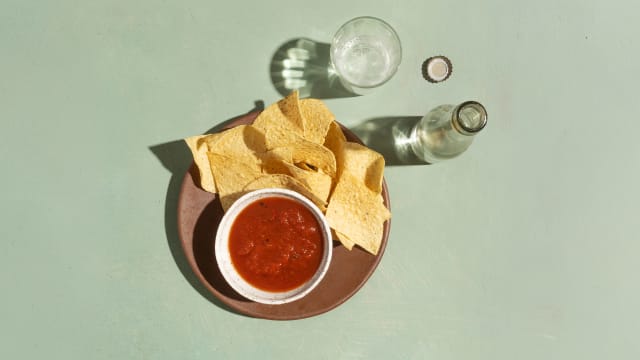Tomatillo

Latin name: Physalis philadelphica, P. ixocarpa
Other names: Mexican husk tomato
Uses: vegetable
What are tomatillos?
Tomatillos are so much more than green (or purple or yellow) tomato-looking spheres with a papery husk. Though related to tomatoes botanically and etymologically (the name means “little tomato” in Spanish), tomatillos are in a genus — and class — of their own.
Why are tomatillos healthy?
Tomatillos are potent sources of vitamins (especially C, E, and K) and minerals (particularly potassium, phosphorus, and magnesium). They’re high in antioxidants, notably lutein and zeaxanthin, that benefit eye health; and withanolides, naturally occurring steroidal compounds with anti-cancer and anti-inflammatory properties.
What do tomatillos taste like?
Tomatillos have a high pectin content and slightly mucilaginous texture, with small seeds that sort of pop when you chew them. Tomatillos are firm and spongy, not juicy; their flavor is slightly more sour, citric, and green than that of a tomato or ground cherry (another Physalis species).
How do I use tomatillos?
Before using tomatillos, you’ll need to peel off the papery husk and wash the sticky, waxy substance off the skins. You can use tomatillos raw or cook them by roasting (they’re especially wonderful roasted over flame), stewing, or adding them to rich braises, where they’ll provide acidity as well as thickening power.
What do tomatillos pair well with?
Tomatillos are best with other green and Mexican and Central American flavors: lime, cilantro, green chiles, green onions, and avocados (it’s no wonder tomatillos are most often used for salsa verde, raw or cooked!). They pair beautifully with any nixtamalized corn product — tortillas, tamales, and hominy — as well as other Mesoamerican ingredients like squash, pumpkin seeds, beans, and pineapple.
Where do tomatillos grow?
Tomatillos are native to Mexico and Central America. They’re mostly grown in the cooler highlands of Guatemala, though they can be grown in temperate climates and are a productive addition to vegetable gardens, growing heartily up until a hard frost.
How to buy tomatillos:
Look for tomatillos that are firm and heavy for their size, with browning husks tight against the fruit (a sign that they’re fully ripe; it’s okay if the husks are peeling back slightly). Store them in a paper bag in the refrigerator for up to three weeks, but don’t remove the husks until you’re ready to use them. You can also freeze tomatillos (husk and wash first) if you’re planning to cook them.
Fun tomatillo fact:
The sticky substance that coats a tomatillo’s skin is called withanolide; it’s a secondary metabolite (a type of chemical plants produce that aren’t directly involved in keeping the plant alive) that tastes bad to insect larvae and other herbivores. Current studies are underway to determine withanolide’s potential use as a natural pesticide.






